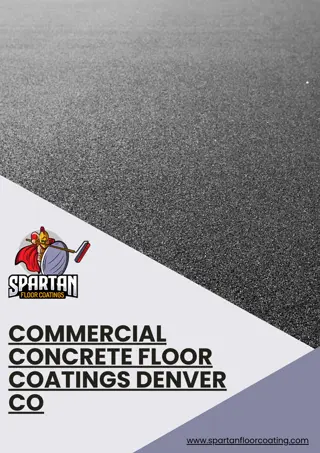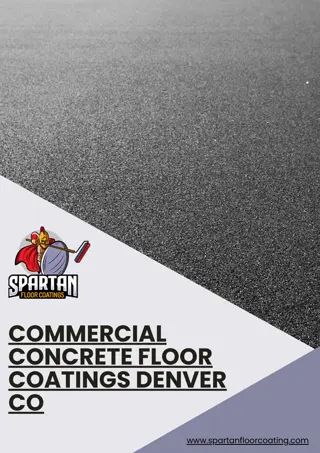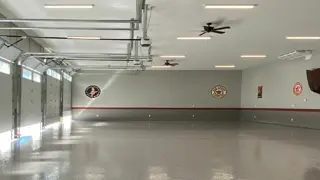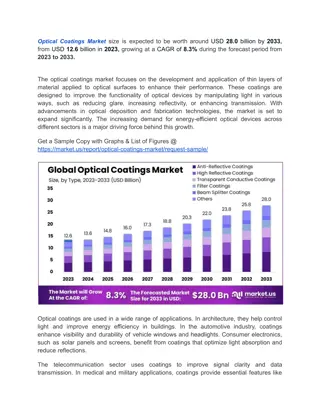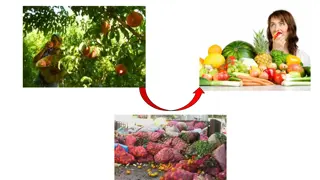The Chemistry of Coatings. Scientific Inquiry Project
Delve into the world of coatings and polymers through scientific inquiry projects, understanding the steps of the scientific method and engineering design. Learn about polymers, epoxies, and their various applications in coatings, adhesives, industrial tooling, electronics, and more.
Download Presentation

Please find below an Image/Link to download the presentation.
The content on the website is provided AS IS for your information and personal use only. It may not be sold, licensed, or shared on other websites without obtaining consent from the author. Download presentation by click this link. If you encounter any issues during the download, it is possible that the publisher has removed the file from their server.
E N D
Presentation Transcript
The Chemistry of Coatings Scientific Inquiry Project
Steps of the Scientific Method 1. Purpose 2. Research 3. Hypothesis 4. Experimental Design 5. Analyze Results 6. Conclusion
What makes a Good Procedure? 1.Testable Hypothesis 2.Quantitative Measurements (SI units) 3.Controls 4.Variables 5.Trials 6.Data Table/Charts
Steps of the Engineering Design 1. Define the problem 2. Research 3. Specify Requirements 4. Develop and Prototype Solution 5. Test Solution 6. Communicate Results
What is a Polymer Polymer: a substance that has a molecular structure consisting chiefly or entirely of a large number of similar units bonded together, e.g., many synthetic organic materials used as plastics and resins.
Examples of Polymers 1.Kevlar 2.Polysaccharides 3.Nucleic Acids 4.Polyester 5.Polyethylene 6.Epoxies
What is an epoxy? Epoxy A flexible usually thermosetting resin made by polymerization of an epoxide and used chiefly in coatings and adhesives.
Uses for Epoxy Resins Paintings and Coatings Adhesives Industrial tooling Electronics Art Pigments Jewelry Flooring Boating
Stoichiometry -Stoichiometry is the process of using quantitative relationships to determine the amount of material needed to form a certain amount of product.
Stoichiometry If I need to make enough sandwiches for the class, how many slices of bread and cheese would I need?
Stoichiometry Stoichiometry can help scientists calculate the amount of reactants or products needed in order to get the desired results for any reaction.
Stoichiometry and Epoxies Most formulated products include mixtures of epoxy resins, diluents (reactive and unreactive), fillers, additives, . It is essential to determine the Epoxy Equivalent Weight (E.E.W.) of the mixture to determine proper stoichiometric ratios with the curing agent. This is accomplished with the following equation:
Goal of Project Group 1: Scientific Method Group 2: Engineering Design Constraints: You re goal is to use the scientific method and create an experiment to determine the ideal ratio of epoxy and resin that has the most strength. 1. You must not use more than 10 mL total of part A and part B 2. Part A costs $0.10/1mL and Part B costs $1.00/1mL. 3. In order to have a successful structure it must fall less than 15% of the original beam height. Both Groups: The final structure will be tested with a three point flexural test and the amount of deviation of the line.
Appendix: Chemistry of Epoxy
Epoxide Formation Epoxy=Di-functional Amine= Hexa-functional We can manipulate the thermosets properties by varying the ratio of epoxy to amine.
Stoichiometry and Epoxies Most formulated products include mixtures of epoxy resins, diluents (reactive and unreactive), fillers, additives, . It is essential to determine the Epoxy Equivalent Weight (E.E.W.) of the mixture to determine proper stoichiometric ratios with the curing agent. This is accomplished with the following equation: (Can have students calculate this if you would like!!)





